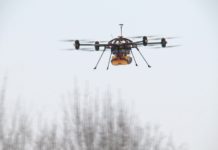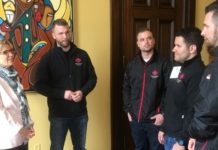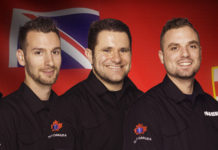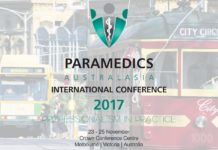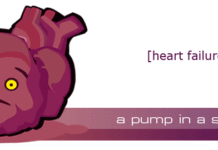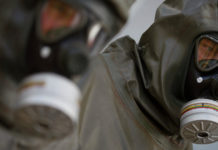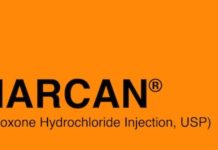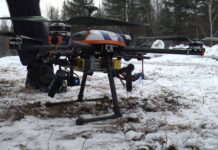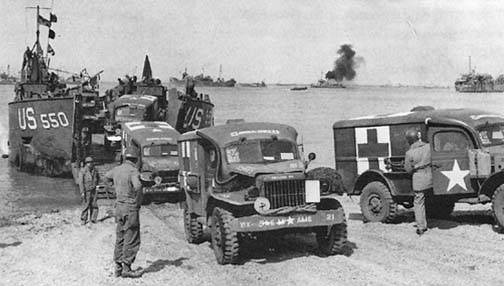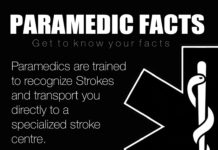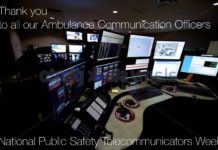The earliest recorded Ambulance dates back to 900AD and pre-dates any other emergency service.
In the 1700’s “Ambulance Volantes” were used by Napoleon during war time to carry wounded from the front lines to fixed hospitals.
In the early 1900’s, improvements in evacuation time by Ambulance decreased morbidity significantly. The practice of splinting closed femur fractures in the field by paramedics decreased mortality from 80% to 20%, and produced the first practical skill adopted by the paramedics of that era. WWII (1939-1944) recognized the first organized Ambulance effort by the medical community, and also the first effective use of Aeromedical transport.
In the 1950’s Ambulances were considered fast rides to the hospital without bandages or Oxygen. Often patients were killed or more seriously injured due to Ambulance accidents. The Korean War (1954), produced widespread use of helicopters for Aeromedical evacuation. Also, specially trained medics were used to deliver physician-type care in the field. In 1957, the first successful use of the Hopkins External Defibrillator was demonstrated on a human.
In 1959, external defibrillators were proven to be effective for the treatment of VFIB but were quite heavy (100lbs) and typically placed on unsteady carts that would tip over; hence the term “crash cart”.
During 1959, in Moscow, Russian physicians moved out into the streets as a pilot project, to see if they could positively impact patient care. They proved that Advanced Life Support (ALS) techniques made a significant difference in patient outcome. They also studied the concept of “doctor of felture” (Physician assistant or Paramedic), and found that if the assistants were adequately trained, there was the same favorable outcome for the patient. From 1958-1960, Asmund Laerdal developed Resusci Anne to be used to train people in mouth to mouth resuscitation.
Vietnam War (1963). Use of field medics, helicopters and field hospitals dramatically reduced mortality rates. In 1965, Cardio Pulmonary Resuscitation (CPR) with Artificial Respiration (AR) became widely used in hospitals and by Paramedics in an attempt to improve pre-hospital care of patients. Unfortunately there were no laws that allowed non-Physicians to administer advanced care. Trained Paramedics were not allowed to practice and referred to themselves as “impotent wonders” out of frustration. The late 1960’s saw the development of portable radio telemetry, so Paramedics could send a continuous Electro Cardiogram (ECG) that the Physician could watch and interpret from the Emergency Department. The 9-1-1 system was also developed for quicker access to medical care.
In 1966, the Ontario Ambulance Act was introduced by the Ontario Government in order to delegate authority and responsibility for licensing, standard setting and coordinate services. In Ontario, prior to 1970, there was no coordination or continuity of service and no standards of training or practice.
In 1970, then California Governor, Ronald Reagan enacted laws that would allow Paramedics to act as Physician delegates (Wedworth Townsend Paramedic Act, 7/14/70). Many other US states quickly followed suit and enacted similar laws. In the early 1970’s, Paramedics were allowed to read ECG’s and by a stroke of luck, the Paramedic program saw wide spread publicity and recognition through the TV series “Emergency”. In 1975, the first light-weight monitor/defibrillator was released by Physio-control called the Lifepak R5. This defibrillator weighed only 18lbs, and could be feasibly used by Paramedics.
In 1972, Ambulance service branches were put in place within the Ontario Ministry of Health. A very important two year period in Ontario was from 1975 to 1977. There were major changes to the Ambulance Act covering licensing, qualifications, equipment standards and record keeping. In 1975, the Emergency Medical Care Attendant (EMCA) program was introduced in Community Colleges and by 1977, Advanced Cardiac Life Support (ACLS) programs were initiated in several communities. Also the use of fixed wing aircraft for the medical air transport “Bandage Program” had begun.
The 1980’s and 90’s, saw the addition of skills such as pulse-oximetry and capnometry, 12-lead interpretation, pronouncement in the field and the use of on-board computers for patient care and documentation. We also saw better Paramedic education and Physician involvement. Some systems also began to study the use of thrombolytic therapy in the pre-hospital setting. Paramedic training had vastly improved, and could finally be found in most large cities. The invent of new training technologies (patient simulators, arrhythmia generators, video tapes and computers) gave Paramedic students the tools they needed to expand their knowledge base and scope of practice. Skills such as external transcutaneous cardiac pacing, synchronized cardioversion, automatic and semiautomatic defibrillation and intraosseous needles were now being taught and implemented in the field.
In 1988, Base Hospital programs were established in order to provide medical direction, leadership and quality assurance. From 1991-1993, we saw improvements to both land and air Paramedic services in an attempt to correct inconsistencies throughout the province and intravenous monitoring was also introduced at that time. From 1994-1996, we saw the initiation of the Ontario Prehospital Advanced Life Support (OPALS) study, which monitored Advanced Care Paramedic practice throughout Ontario who were now harnessing much more than the Semi-Automatic External Defibrillators (SAED’s) and Symptom Relief Drugs that the Primary Care Paramedics were using.
Finally, in 1997 the Ministry of Health recognized a name change from Ambulance Officer/EMCA to the existing name of Paramedic for all levels of expertise. With several Community Colleges now offering an Advanced Care Paramedic program, the Primary Care Paramedic Programs across Ontario moved to a two year format (1999) to improve and enhance the quality of education and facilitate a more fluent transition to the Advanced Care level.
The year 2000 and beyond… In the first 4 years of this century we have already seen a moderate expansion in the Paramedic scope of Practice with the addition of external transcutaneous cardiac pacing, synchronized cardioversion, chest needle decompression, nasogastric tube insertion and the addition of several new medications. We can easily look ahead into the near future and predict the inclusion of advanced skills such as rapid sequence intubation, chest tube insertion and possibly folley catheter insertion. With ongoing research of Thrombolytic Therapy in the pre-hospital setting, it is expected that Ontario Paramedics will soon possess this skill in our scope of practice as well.
The Paramedic concept has been around for over a century. Unfortunately the need for advanced pre-hospital care was not recognized until the 1970’s and because of this, the advancement of our profession prior to that time was severely limited. Over the past decade, our profession has evolved with remarkable speed. We have become a closely knit society of skilled professionals whose primary function is to deliver the highest quality of pre-hospital medical care to the public we serve.
It is quite apparent that Paramedics in certain parts of the world including the USA and other parts of Canada have evolved much quicker than their counterparts in Ontario. However, over the past ten years the Ontario system has evolved at such an extreme rate that we have almost made up for the time that was lost. In fact, it is probably safe to assume that if we continue on our current course we could be considered to be among the best in north America; if not the world.
This is an exciting time for us as Paramedics as we strive to better ourselves within our circle of medical professionals. We take pride in the accomplishments of our predecessors and look forward to the rewards afforded to those who will become our future. We welcome the responsibility and embrace the trust that is placed in our capable hands.
Written by Dan Ladouceur

